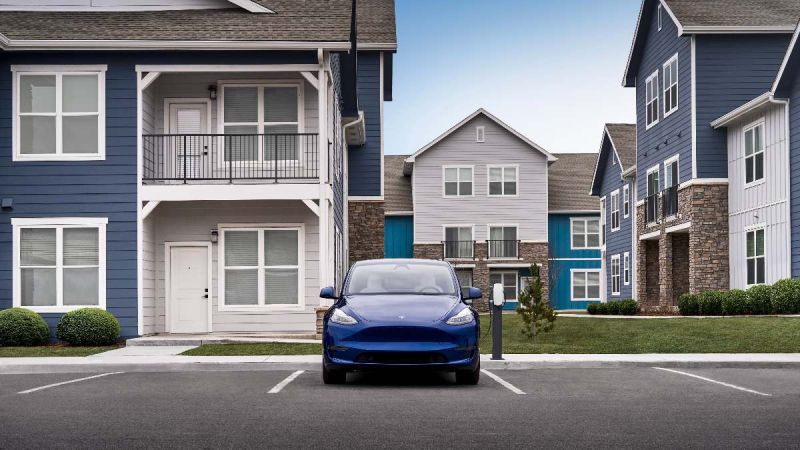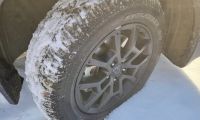Lately, there has been a lot of discussion about how legacy automakers and Chinese OEMs have matched or surpassed Tesla’s EV prowess. Industry observers claim that even Tesla’s software lead has evaporated, and automakers such as Rivian, Volvo, and Lucid have equivalent or better offerings.
However, when people compare Teslas to other EVs, they fail to consider the incredible integration on every level of Tesla’s business.
Yes, there are newer EVs with better range or faster charging speeds; however, Tesla vehicles have unlimited access to the supercharger network and are almost always a better value for money.
The new Tesla owner has significantly cut his monthly car payments by switching from a Lexus RX 350 to a Tesla Model Y. The savings were further amplified by gas savings and when he switched from Allstate to Tesla Insurance. @Tesla @elonmusk #Tesla
-https://t.co/AQvtCv4tuC
- pic.twitter.com/Uiijnh15z3— Torque News (@torquenewsauto) May 22, 2024
Since Tesla paved the way, several EVs have also launched at a cheaper price point, but those vehicles are compromised in significant ways, whereas Tesla vehicles aren’t.
If you take a single point and compare Tesla to other automakers, you can always find areas where competitors are better than Tesla; however, if you take Tesla as a whole, the EV maker’s lead in the auto industry is still unrivaled. Arguably, Tesla’s lead is growing even larger day by day.
One such example, which shows Tesla’s superior integration between vehicle hardware, software, service, and repair, recently happened to a Tesla owner.
X user Winston recently encountered an issue with his Tesla vehicle, and he shared his experience diagnosing and repairing this issue. Here is what Winston wrote…
Let's take a moment to appreciate Tesla's Service Mode.
Service Mode comes standard on all Tesla Vehicles. It lets you diagnose and repair your vehicle yourself.
In my case, my rear seatbelt buckle has a fault. If a safety restraint system (SRS) fault is detected on almost any other vehicle, it throws the airbag light. You would then need to take the car to a shop that charges you $120 or more to diagnose the car's airbag system. To diagnose a vehicle's SRS system, you need an OBD2 device to diagnose SRS codes. It is not in Tesla; you can do it from the screen in 30 seconds!
And it gets even better: with OTAs, Tesla is adding more features to service mode!
Thanks to Tesla’s superior integration between vehicle hardware and software, Winston was able to diagnose the issue with his rear seatbelt buckle within seconds from the comfort of his own vehicle.
This is incredible on its own; however, another commenter in the thread who is knowledgeable about similar issues in other Tesla vehicles pointed out an even more impressive example of Tesla’s vertical integration.
In response to Winston’s post about his rear seatbelt buckle issue, Micheal Phan wrote, “Very common problem on the older Model 3's. That's the bulk of the mobile service repairs. The auto diagnosis system will detect this remotely and advise a repair plan to replace the 2nd-row center buckle. Technology and automation is amazing.”
Not only does a Tesla diagnose itself and show you the exact issue, but the vehicle also automatically sends the error to a Tesla service center near you and recommends a service plan.
Very common problem on the older Model 3's. That's a bulk of the mobile service repairs. The autodiag system will actually detect this all remotely and advise a repair plan to replace the 2nd row center buckle. Technology and automation is amazing.
— Michael Phan (@mpgenchau) May 22, 2024
Once you agree to the service plan, a mobile Tesla service van will come to your location, and depending on the issue and warranty status, a Tesla service technician will repair the issue at your convenience.
Given Tesla’s superior integration, if you encounter an issue with a Tesla vehicle, you can theoretically diagnose it, set up a service appointment, and have the vehicle repaired without leaving your driveway.
If you think this is impressive, with the Cybertruck and Tesla’s upcoming next-generation vehicles, Tesla has increased the integration between its vehicles and software even more.
According to Tesla, the Cybertruck features a revolutionary high-bandwidth ethernet cable loop that connects every vehicle part into a single control system. Rather than a hodgepodge of can buses and wiring, the Cybertruck’s ethernet cable loop has allowed Tesla to decrease vehicle wiring by 70 percent, increase data transfer capability, decrease cost, and improve functionality.
Tesla says that since every part of the Cybertruck is connected to a single high-bandwidth system, any issue that has occurred at any point in the vehicle can easily be detected and diagnosed from a single loop.
Tesla’s Service Mode is impressive. However, based on the comments, there appears to be a great deal of confusion among Tesla owners about how to access the feature. There are two ways to access service mode: one through the touch screen and another by connecting a laptop and Toolbox 3 to the vehicle.
For owners, the easiest way to access Service Mode is using the touchscreen, and here is how to access the feature inside your Tesla.
- On the vehicle touchscreen, touch CONTROLS (vehicle icon) > SOFTWARE.
- Touch and hold the large word "MODEL" for 4 seconds, then release.
- Use the on-screen keyboard to type "service" into the access code field, then touch OK.
At this point, depending on your firmware version, the touchscreen either becomes overlaid with the word "SERVICE MODE" in red or if you have newer firmware versions, a red border will appear around the edges of the touchscreen UI, informing you that you are in Service Mode.
Service Mode is just one of the unsung heroes of Tesla’s business that sets the EV maker apart from competitors.
Elon Musk Reveals the Significance of the Ongoing Giga Texas Expansion Project – “The Part Furthest Away From the Glass Will be a Super Dense, Water-Cooled Supercomputer Cluster” @Tesla @elonmusk #Tesla
-https://t.co/PY52gJYQdj
- pic.twitter.com/loAU3pUKpe— Torque News (@torquenewsauto) May 20, 2024
Having said that, it’s still important to point out that there are still many issues with Tesla’s service and repair. Customers still complain about long wait times, less-than-stellar customer service, parts that break too often, etc.
However, Tesla is also addressing these issues head-on. The EV maker has a tight feedback loop between service and manufacturing, which means parts found failing too often in the fleet get easily identified. Tesla immediately eliminates those parts from the manufacturing process straight from the factory.
Overall, service is only one part of Tesla’s business that helps the company become a leader among auto OEMs, and we’ll be sure to keep you posted as the EV maker improves all parts of the company’s business.
Until then, visit our site, torquenews.com/Tesla, regularly for the latest updates.
So, what do you think? Are you surprised to learn how easy diagnosing and repairing an issue in your Tesla vehicle is? Do you think any other automaker offers a better service experience than Tesla? Let us know your thoughts in the comments below by clicking the red “Add new comment” button.
Image: Courtesy of Tesla, inc.
For more information, check out: Look At My Numbers After Trading My Lexus EX 350 To Tesla Model Y and My Allstate to Tesla Insurance
Tinsae Aregay has been following Tesla and the evolution of the EV space daily for several years. He covers everything about Tesla, from the cars to Elon Musk, the energy business, and autonomy. Follow Tinsae on Twitter at @TinsaeAregay for daily Tesla news.











